OBSERVER CORPS & LOCAL DEFENCE VOLUNTEERS
An account in The Burnham Gazette and Highbridge Express Centenary Edition of 1964 tells us:
“The second world war found Burnham on the route of the German bombers from Germany to South Wales and many raids were observe from the Burnham Esplanade. One raid with fatal consequences [not specified]. Propaganda leaflets were dropped on the sandhills by the Germans, many of which are still preserved. The raiders presumably thought that they were over some large city such as Bristol or Cardiff. Considerable defence measures were taken including the construction of pill-box forts and wire entanglements but fortunately they were not used.”
Burnham was home to one of the 19 Observer Corps teams which formed part of the No 22 group (H.Q. at Yeovil)
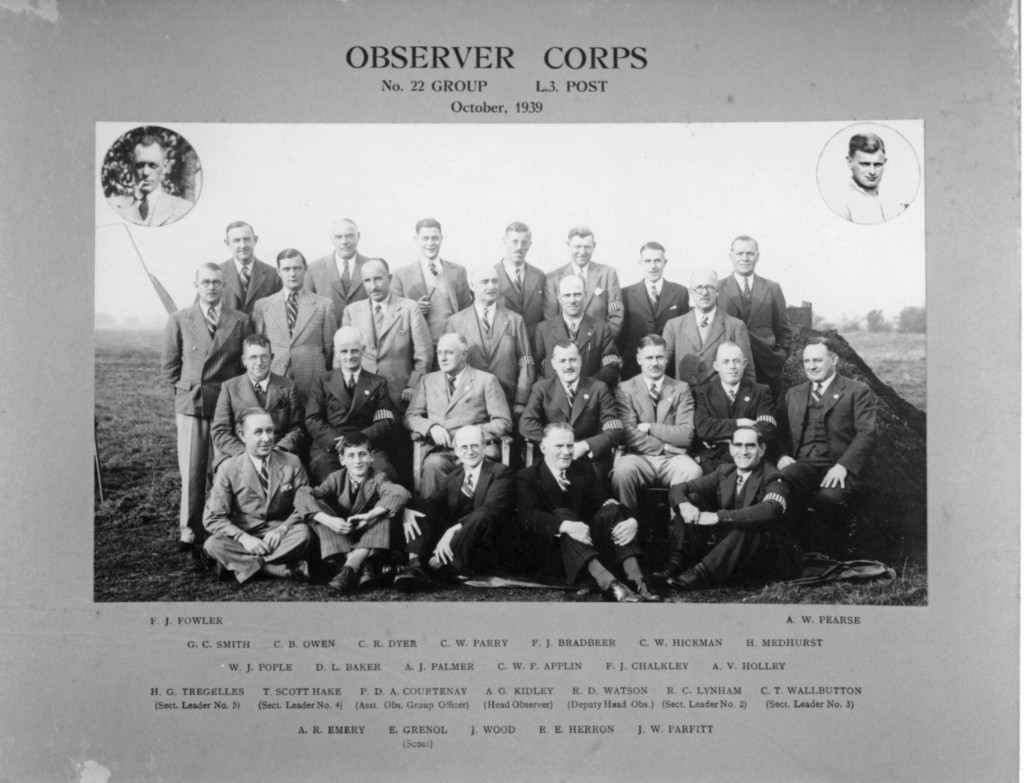
Observer Corps 1939. No 22 Group L.3 POST
Below are a number of stills from the film by Norman Gobey showing the Local Defence Volunteers.
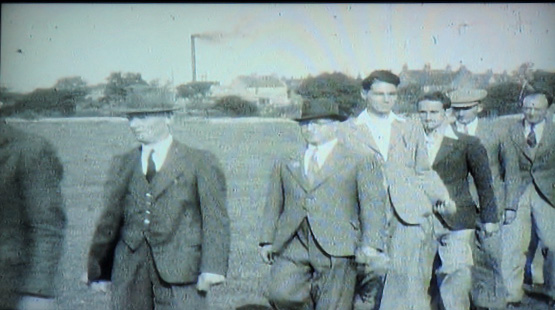
Raw recruits.
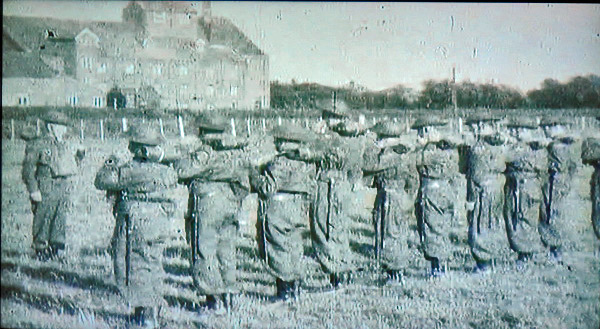
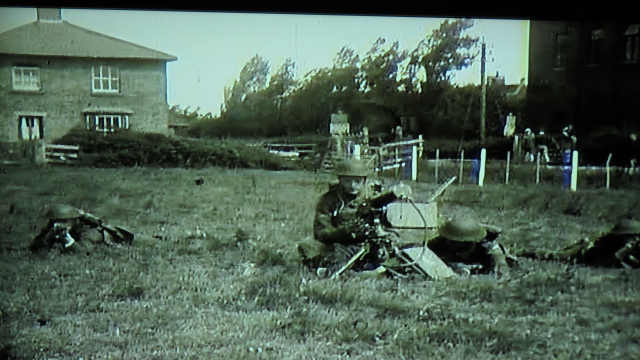
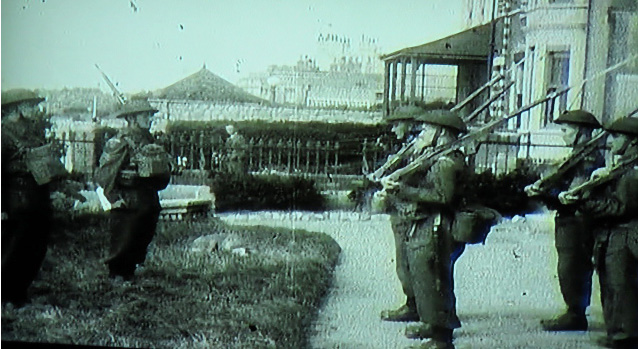
On duty at Kinver Terrace.
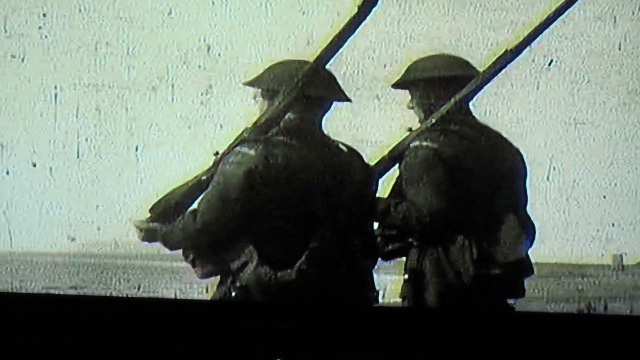
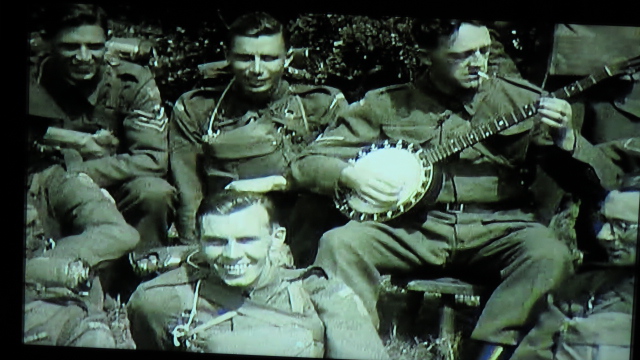
The first civilian casualties of air strikes in Somerset were at Burnham on 18th June 1940 when 2 people were killed, 3 injured and damage caused to 70 houses. On 14th August 2 Heinkels were shot down over Sedgemoor, one coming down in the mouth of the River Parrett from where the body of a gunner was recovered on 12th September. (Info from Somerset at War 1939-45 by Mac Hawkins)
The building at the rear of the Adult School in Adam St, seen below in a photo by Glyn Luxon, was at one time part of the Civil Defence network.
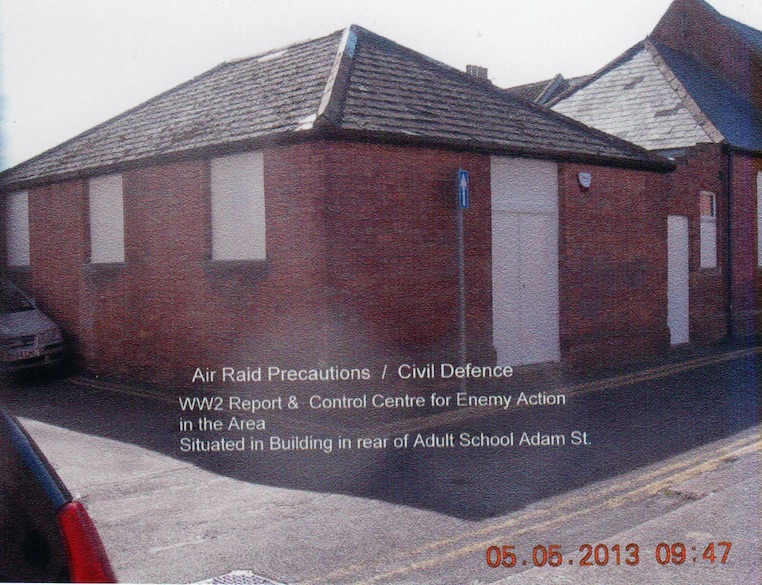
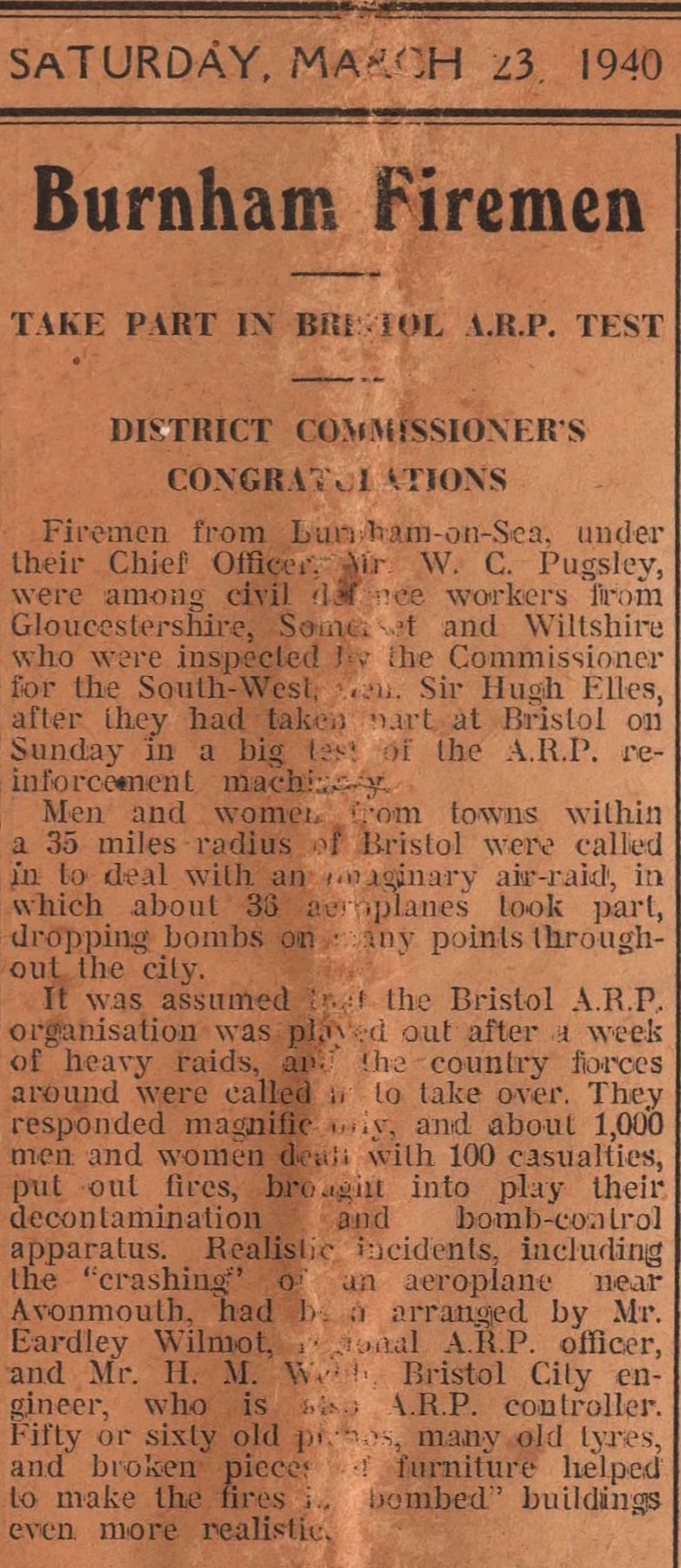
IDENTITY CARDS
On 7th September 1939, the National Registration Act was passed, introducing identity cards for everyone, including children. The card was stamped by the local registration office. Thanks to Brian Marchent for providing the example below which was issued in 1944, presumably shortly after his birth.
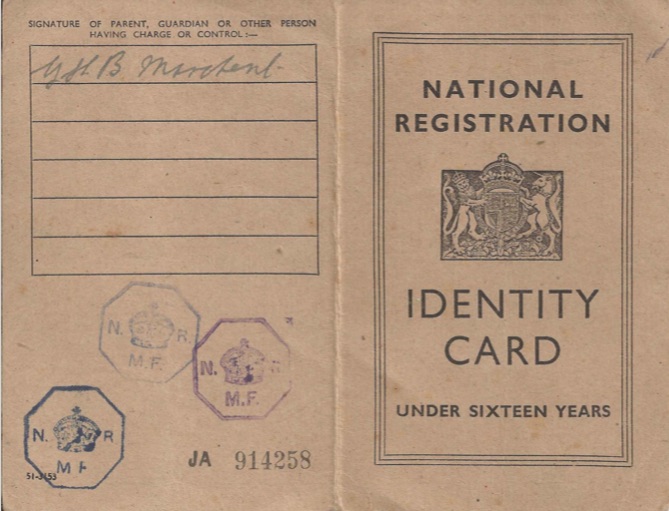
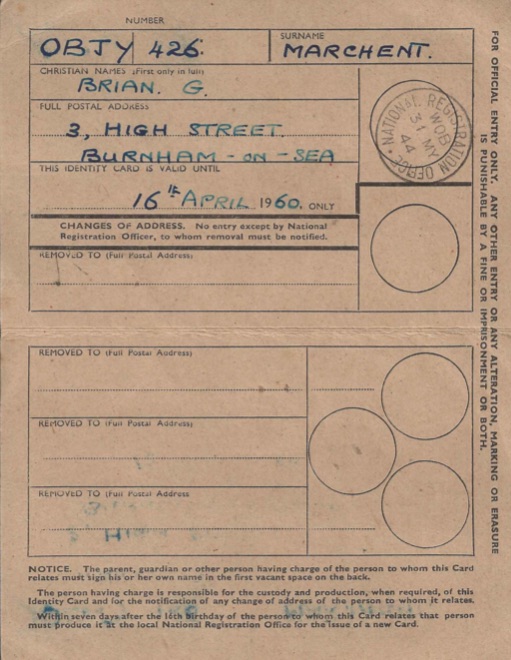
RATIONING
Not without it’s amusing aspects, as indicated in a retrospective report in the Weekly News in April 1990:

EVACUATION OF CHILDREN & ACCOMMODATION OF REFUGEES
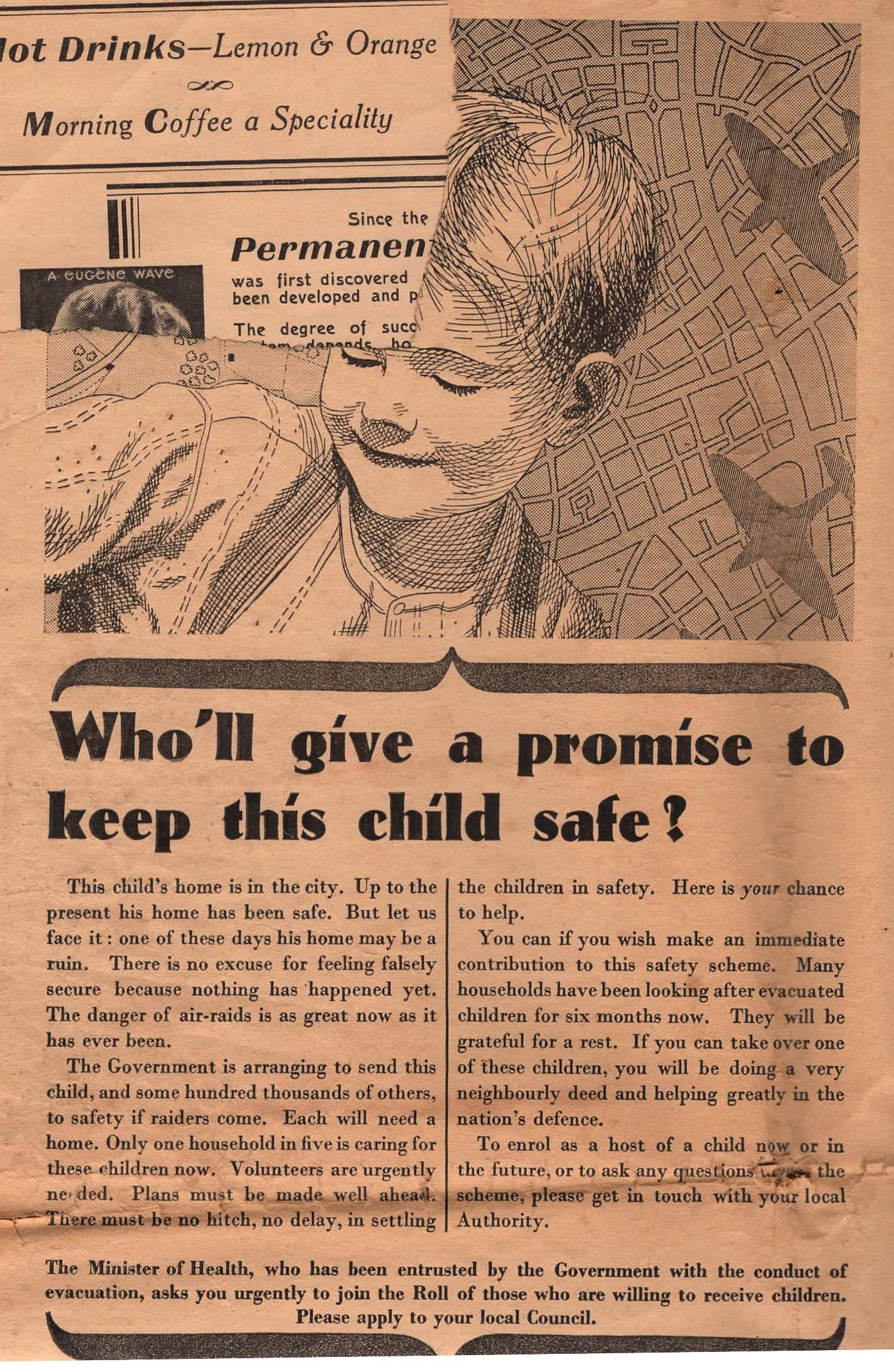
Above: Highbridge Advertiser March 1940Below, local press report form 1941.
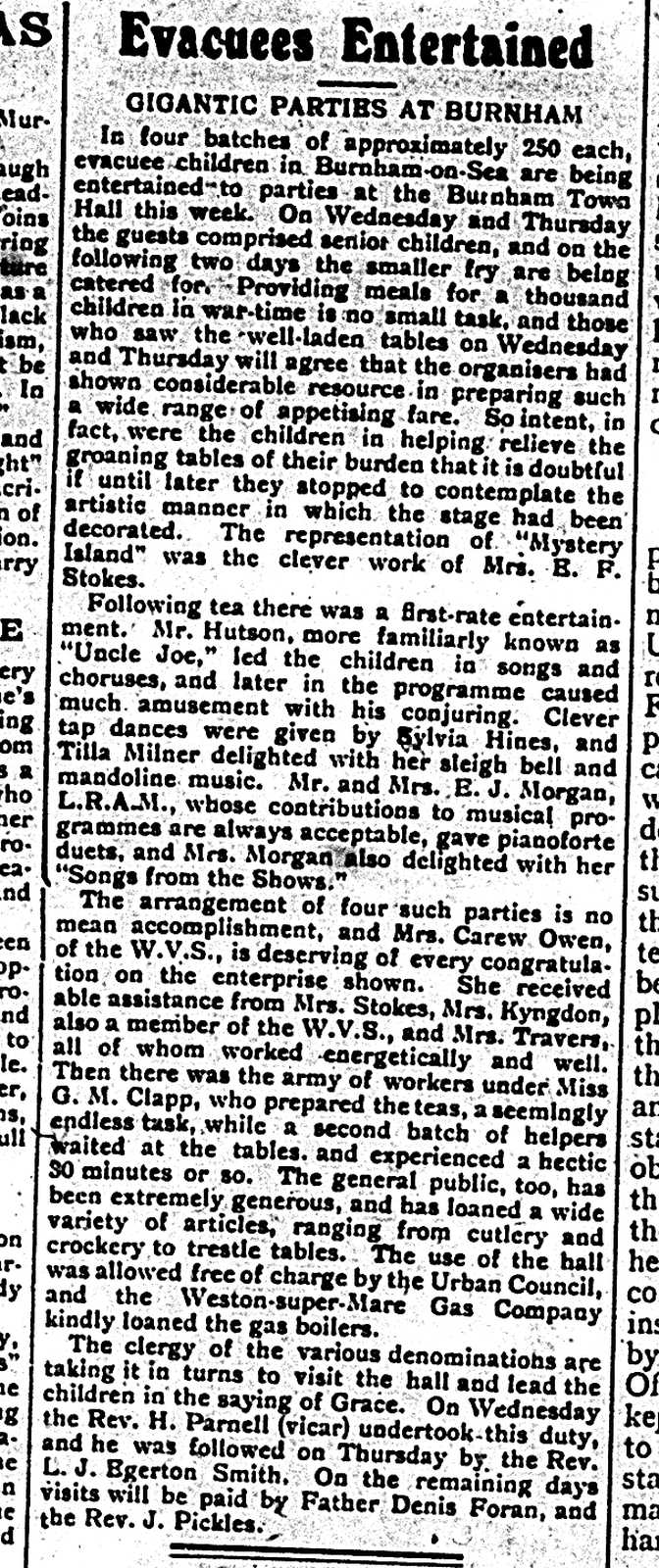
The certificate below (image supplied by A. Young) appears to be a certificate of thanks to a local resident for accommodating evacuees or refugees.
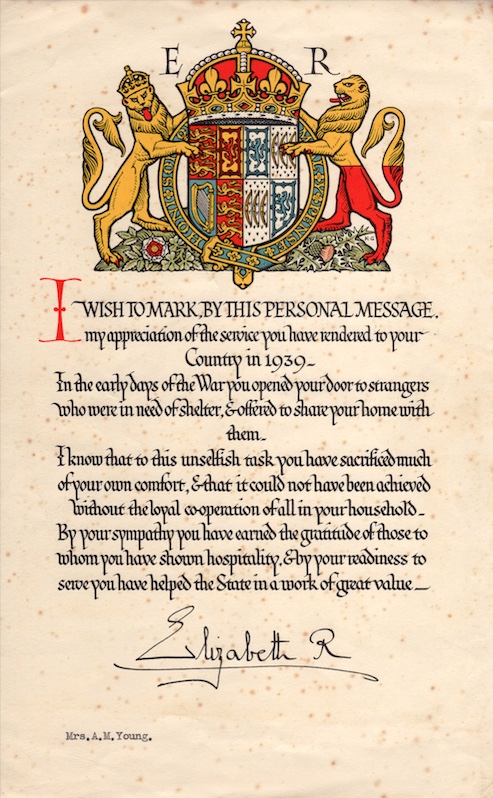
Neil Olsen has alerted us to graves of two WWII evacuees from London in the Burnham cemetery: Florence Rose (1926 – 1941) who died aged 15 whilst evacuated; and Louisa Hines c1900 – 1941. The latter was clearly not a child so her status as an evacuee is interesting.
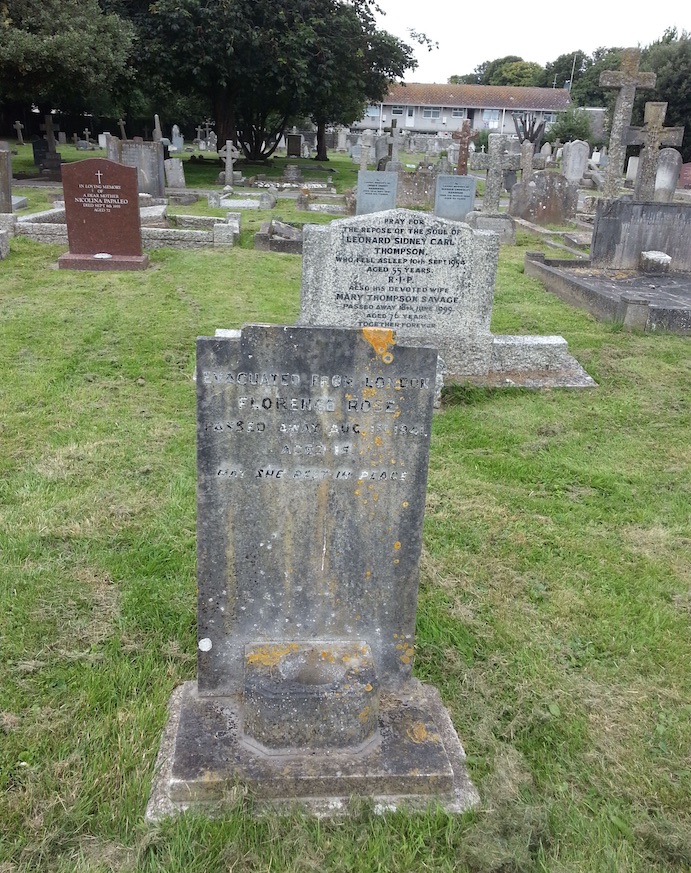
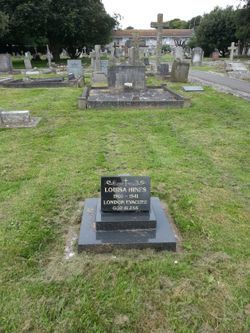 More information about these two individuals can be found here.
More information about these two individuals can be found here.
BLACK OUT
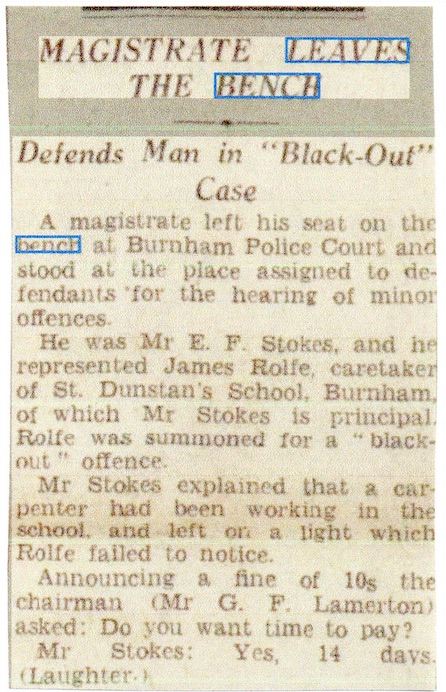
Western Daily Press 23rd Jan 1943The above article was supplied by Des Parsons. Des recalled having it when purchasing a card for the 100th birthday (in 2020) of Patrick Stokes, the son of the gentleman in the article. Patrick Stokes had been Des’s first boss at Wallbutton’s Garage.
BEACH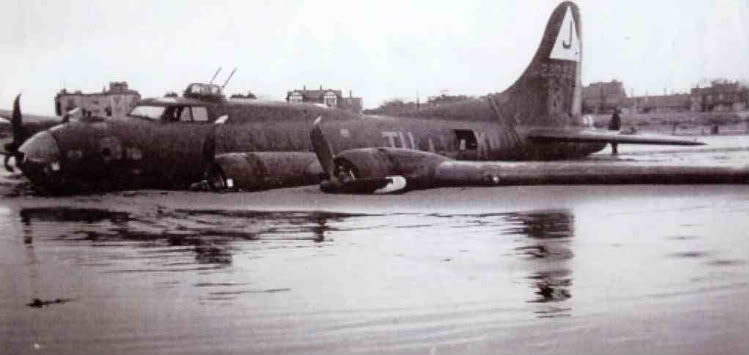 ES
ES
U.S. B17 Flying Fortress of the 351st Bomb Group at Polebrook crash- landed on Burnham beach on 31st December 1943 after being damaged by German fighters during a bombing raid on German held targets in France. The crew had to race the incoming tide to get out of the aircraft, which was sinking in the mud, and up the beach. They were then invited to join the nNew year’s Eve party in the Queens Hotel. A commemorative plaque was unveiled by local MP David Heathcote-Amory on 23rd January 2004 to mark the 60th anniversary of the crash-landing. It is situated on the North Esplanade sea wall. For further information see http://www.burnham-on-sea.com/news/2013/walter-skinner-dies-28-11-13.php
The postcard below shows the poles driven into the beach to prevent enemy aircraft using it as a landing strip.
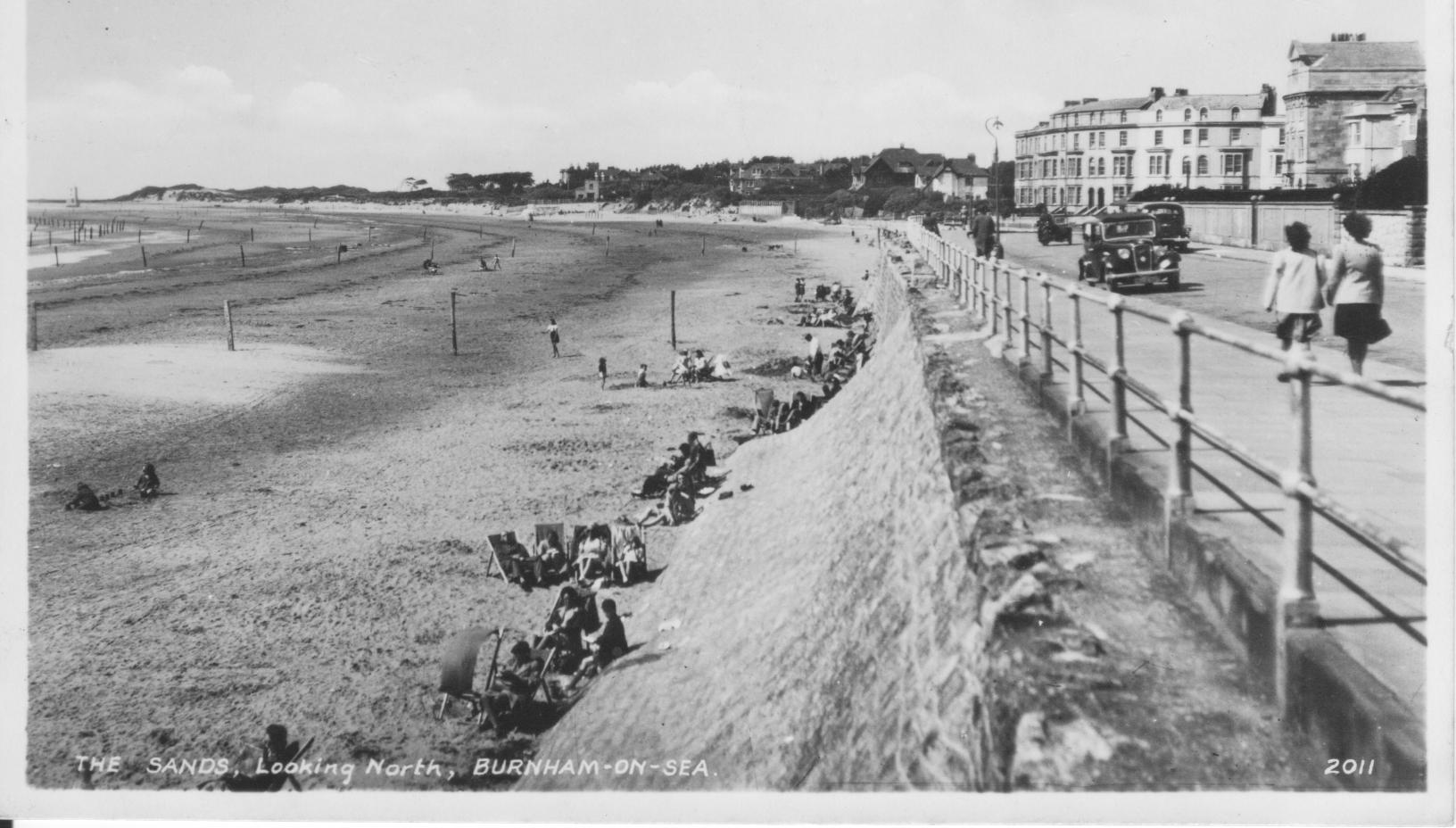
U.S. ARMY PRESENCE
Between 1943 & 1945 members of the U.S. Army Transportation Corps 202, 780th Railway Company, were billeted at Naish House and worked at Highbridge Wharf.
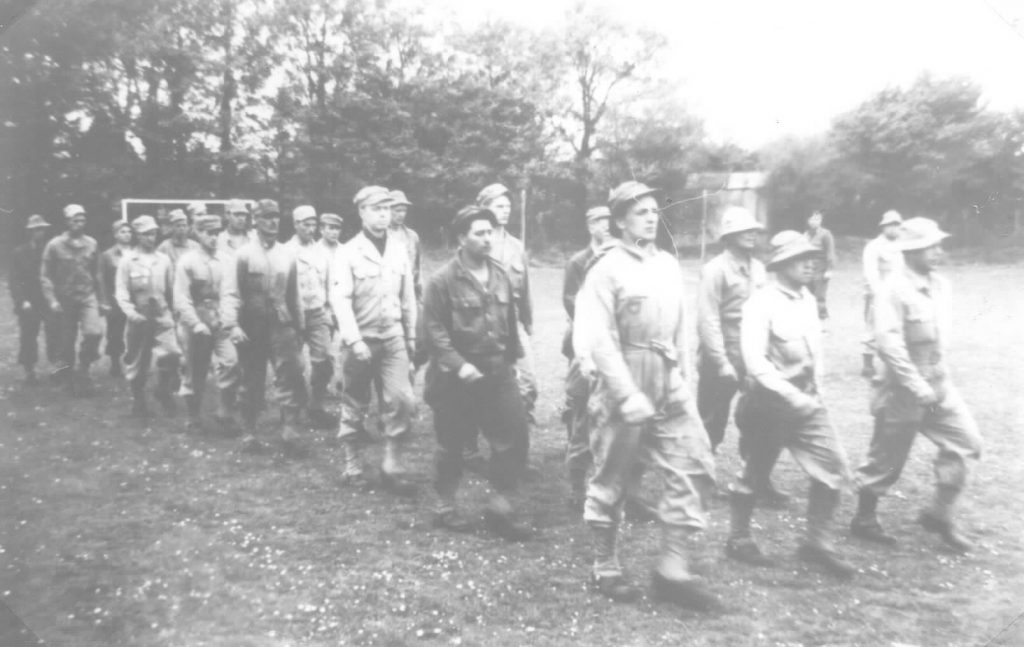
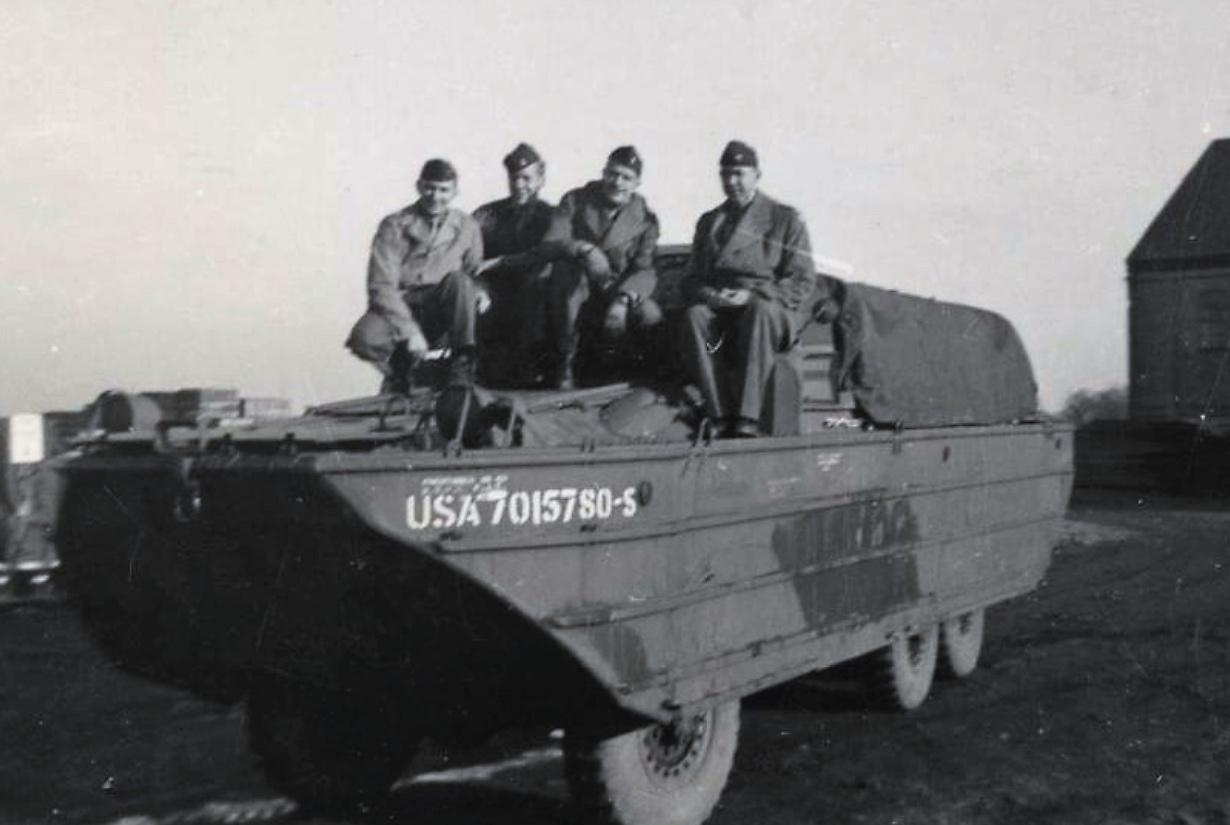 At the Highbridge Depot.
At the Highbridge Depot.
USA Army Fuel Depot at Highbridge
We have received information about railway facilities for the storage of Petrol, Oil and Lubricants which the US Army created on and adjacent to the Somerset & Dorset Railway at Highbridge. Alan Hammond’s Spirit of Somerset & Dorset Railway publication describes US Army troops occupation of the fields on which Walrow Industrial Estate now stands for the storage of 1,045,000 5- gallon cans of gasoline. This was over 8% of the USA cased fuel storage in the UK . They all disappeared a fortnight before D Day!
We are grateful to John Palmer who produced the image below. Using information from the South West Heritage Trust of the R.A.F’s photographic mosaics of about 1946 and overlaying this onto the S&D Station has recreated this lost facility.
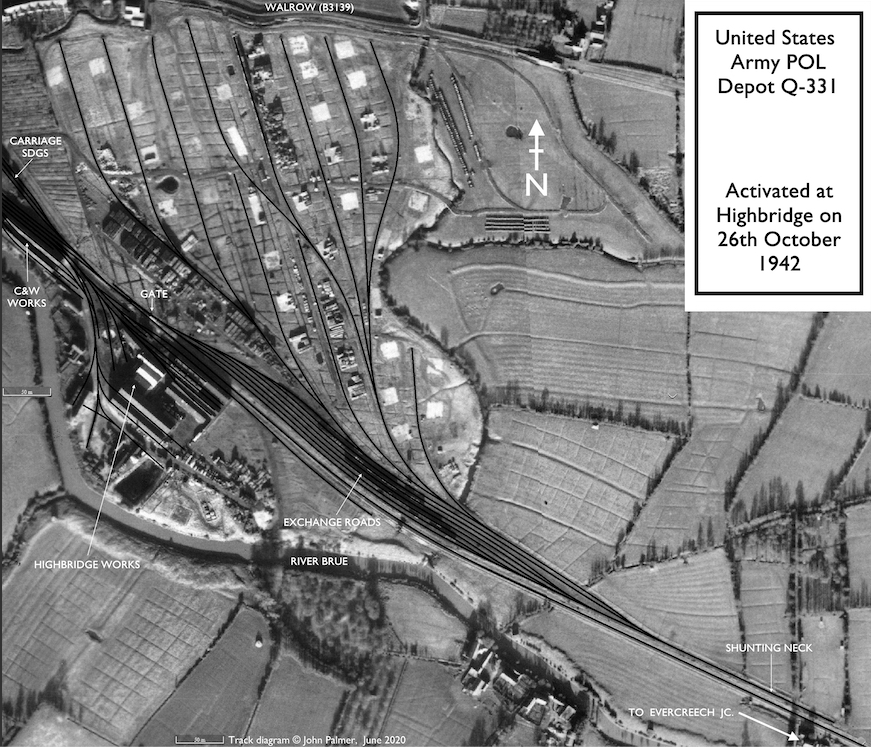
We are grateful for the Somerset & Dorset Railway Trust’s permission to use their image showing the grassed area beyond the coaches which should still have track there on the date taken 5 August 1962.
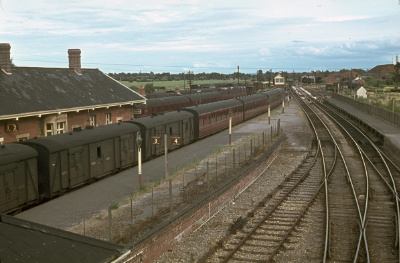
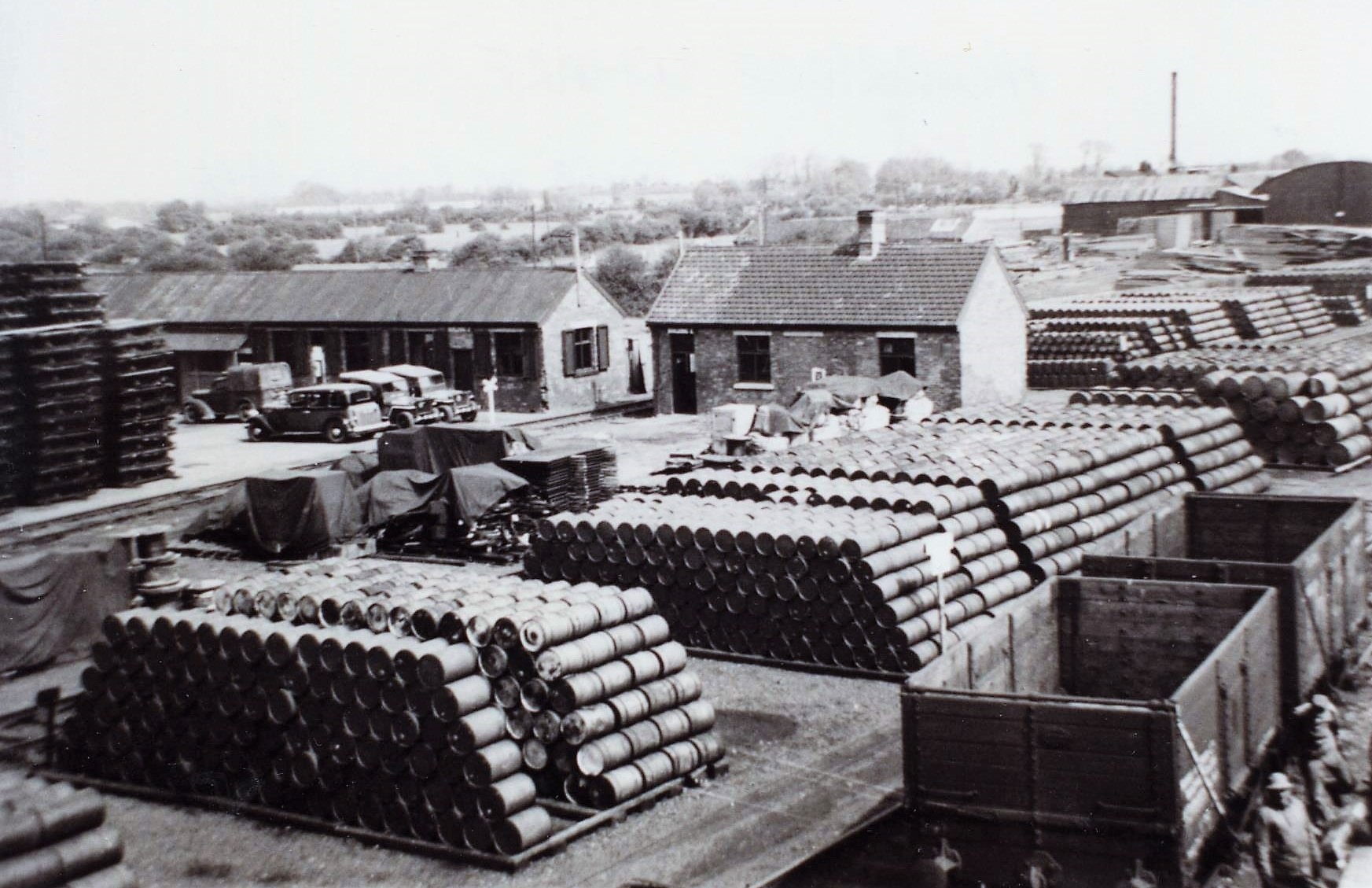
Storage drums
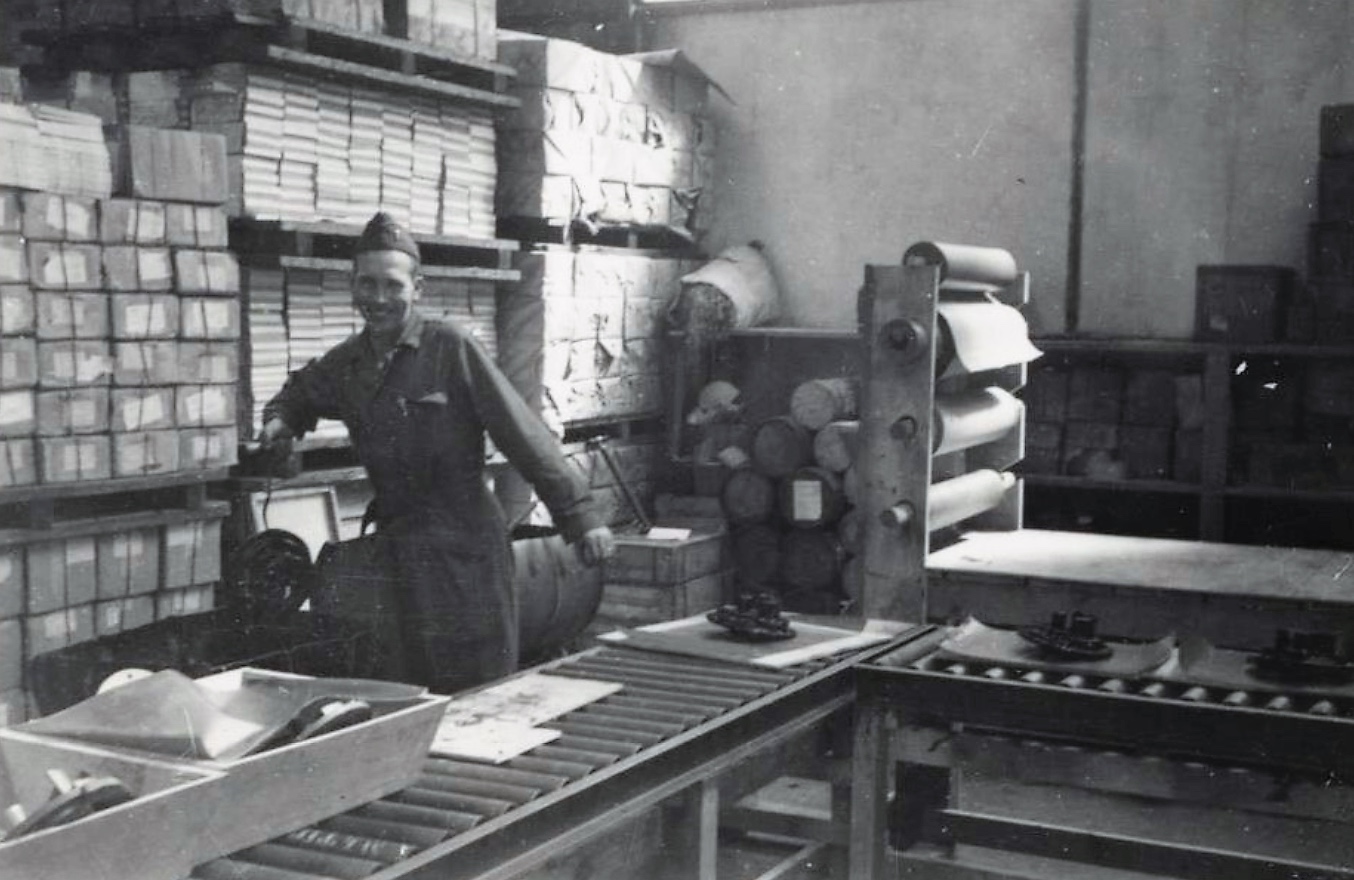
RUNAWAY TRAIN
In 1942 Special train WO/GWR/53/558 was bound for the Highbridge military depot, from Shepton via Wells, with a cargo of high octane aviation fuel destined to be shipped overseas. After Somewhere en route, after 2.20pm, constant whistles indicated that the train was a runaway.
Urgent memorandum telegraphed by the Ministry of Transport about this train: CRITICAL THAT TRAIN PROCEEDS EFFICIENTLY AND WITHOUT INCIDENT. THE MINISTRY EXPECT NOTHING BUT THE UTMOST SKILL IN SIGNALLING AND OPERATIONS FROM BOTH RAILWAY COMPANIES INVOLVED…..IT IS IMPERATIVE TO STRESS THAT CARGO IS HIGHLY FLAMMABLE AND ANY INCIDENT POSES A SEVERE RISK TO CIVILIANS. YOU WILL BE AWARE OF HOW HIS MAJESTY’S FORCES FIGHTING OVERSEAS DEPEND ON THIS CARGO TO PROSECUTE THIS WAR SUCCESSFULLY. YOUR EXPERTISE, AND CO-OPERATION WILL RESULT IN THE BEST OUTCOME FOR THIS DELIVERY.
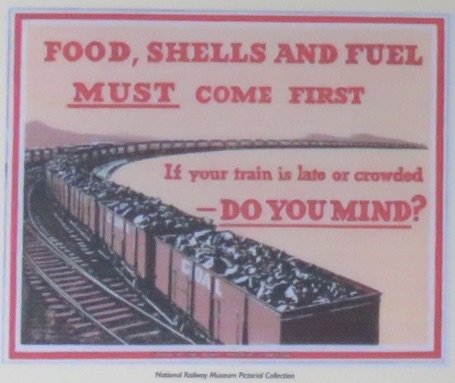
The points were not changed for the S&D Highbridge line and the train hurtled on to finally come to rest in the Portway cutting, thus averting disaster.
(Information taken from East Somerset Railway interpretation board).
Railway enthusiast John Palmer has given us more detail based on his research and that of Paul Fry (‘S& D Memories, Millstream Books 1993). John believes that the date of this incident may have actually been 1943 or 1944 as the railway link to the Highbridge petroleum depot was not completed until early 1943, although the depot was active from October 1944. John adds that the route included a 3 mile long incline of 1 in 46.5, very steep for a railway. The trains of the time were not equipped with continuous braking, operated from the locomotive, with braking only applicable to the loco or guard’s brake van during motion. Brakes could be applied to carriages manually whilst stopped but as the brake blocks were metal, which could cause sparks, it was decided best not to apply them in the presence of ignitable fuel and to rely on the loco and brake van. The complexity of the railway lines around Wells meant that quick thinking was needed by a number of signalmen, resulting in the train missing a risky tight curve on its intended route and eventually coming to rest on a rising gradient.
COMMERCIAL ACTIVITY
Commercial activity was affected by war, not only by rationing of materials but also by labour shortage:
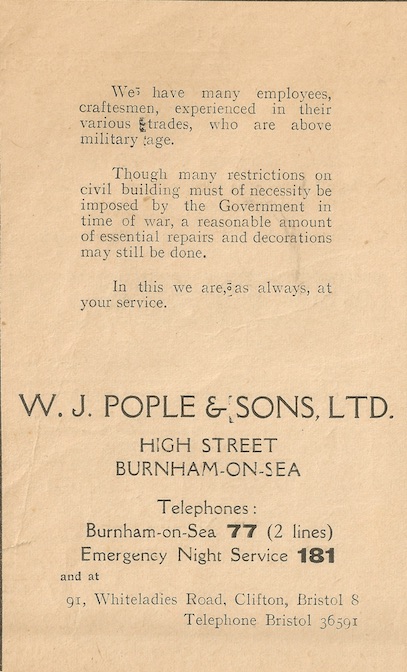 1942
1942
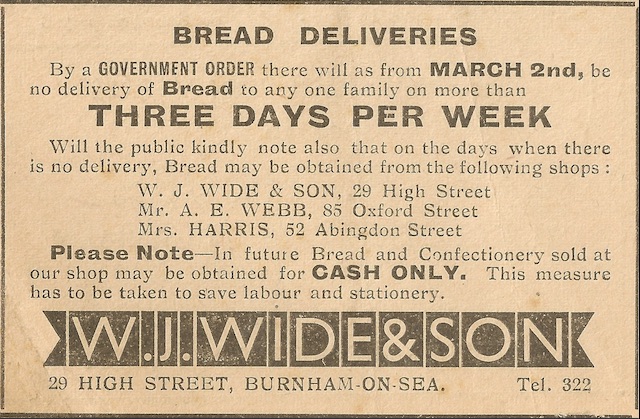
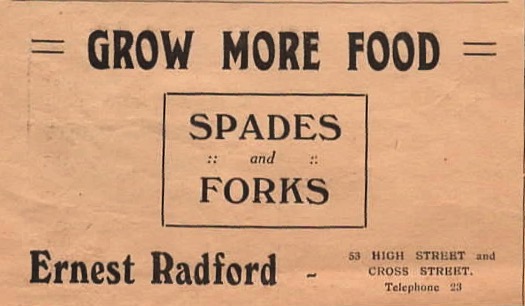
1940: Radford’s were keen to encourage the ‘Dig for Victory’ campaign.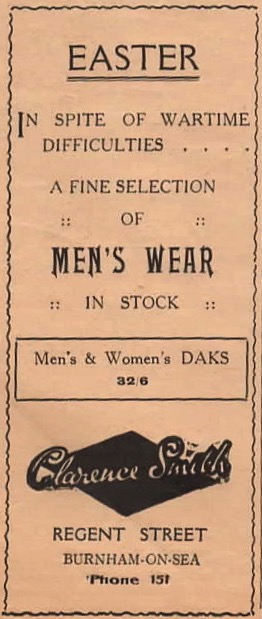 1940
1940
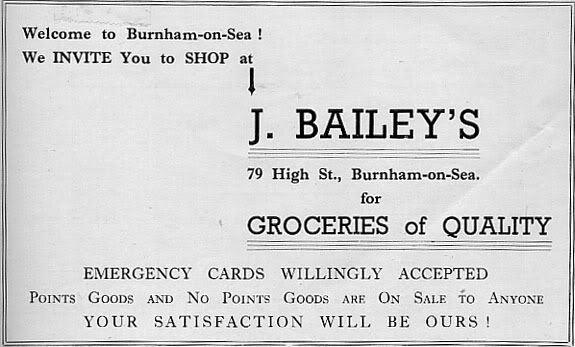
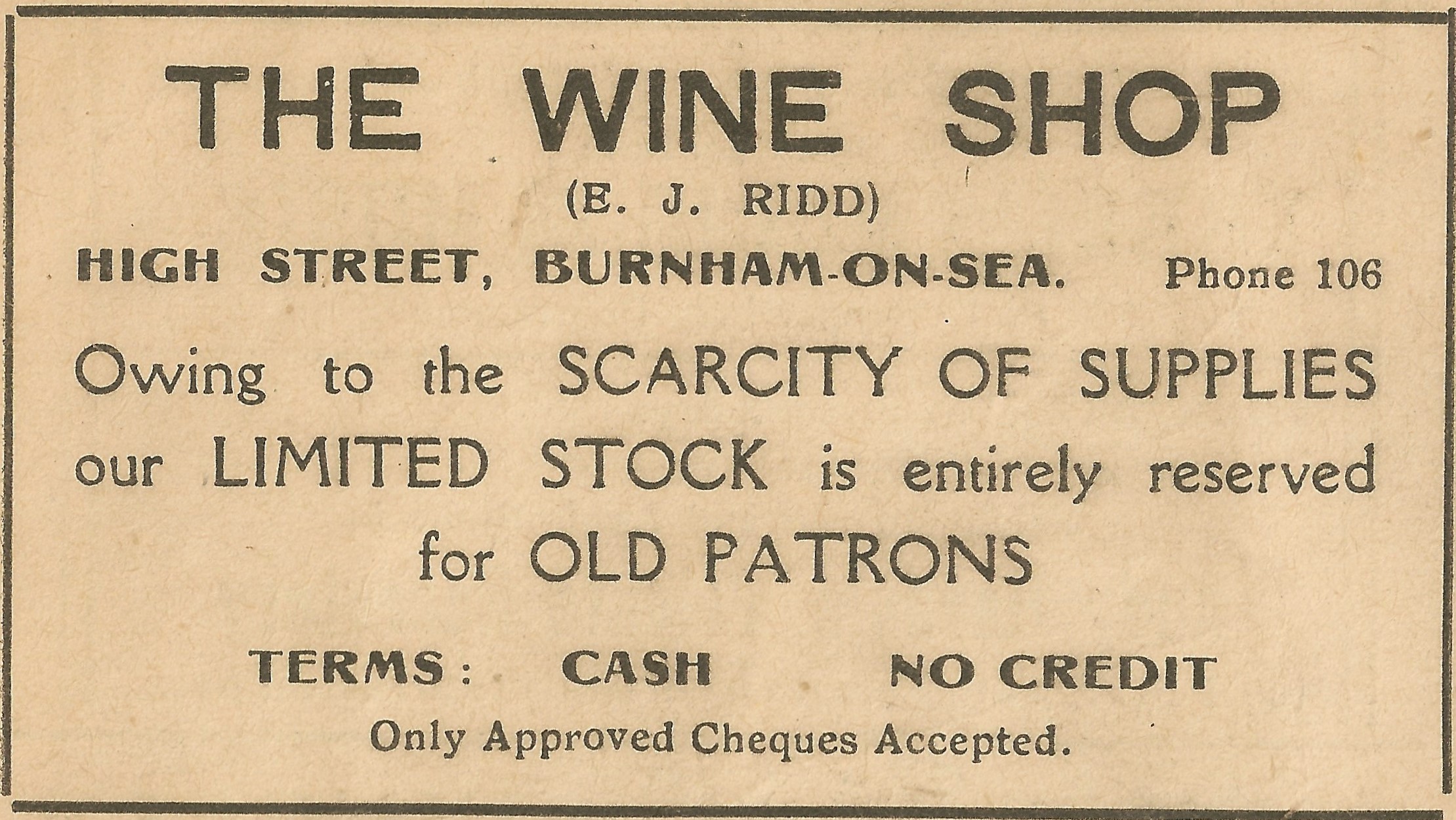 1942, Mrs Ridd looking after the regulars.
1942, Mrs Ridd looking after the regulars.
ENTERTAINMENTS
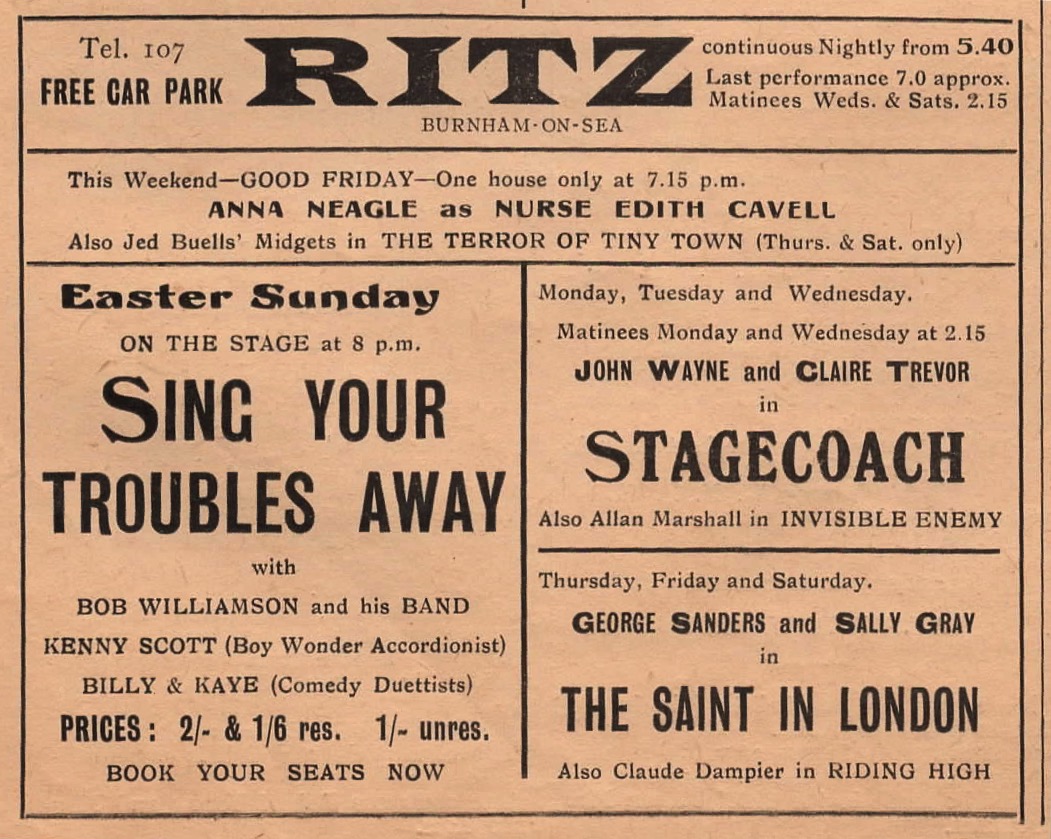
Ritz Cinema 1940


FUNDRAISING
Warship Weeks 1942:
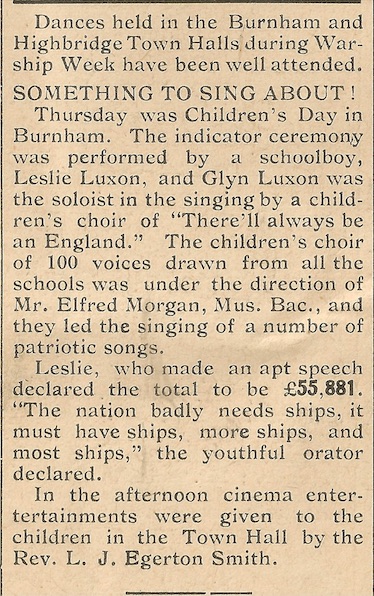
Warship Weeks were British National Savings campaigns with the aim of a Royal Navy warship being adopted by a civil community. A press announcement quoted the adoption of eight battleships, four carriers, forty-nine cruisers, three hundred and one destroyers, twenty-five submarines, one hundred and sixty-four corvettes and frigates and two hundred and eighty-eight minesweepers nationwide. The newspaper clipping above may be from the March event (photo below).
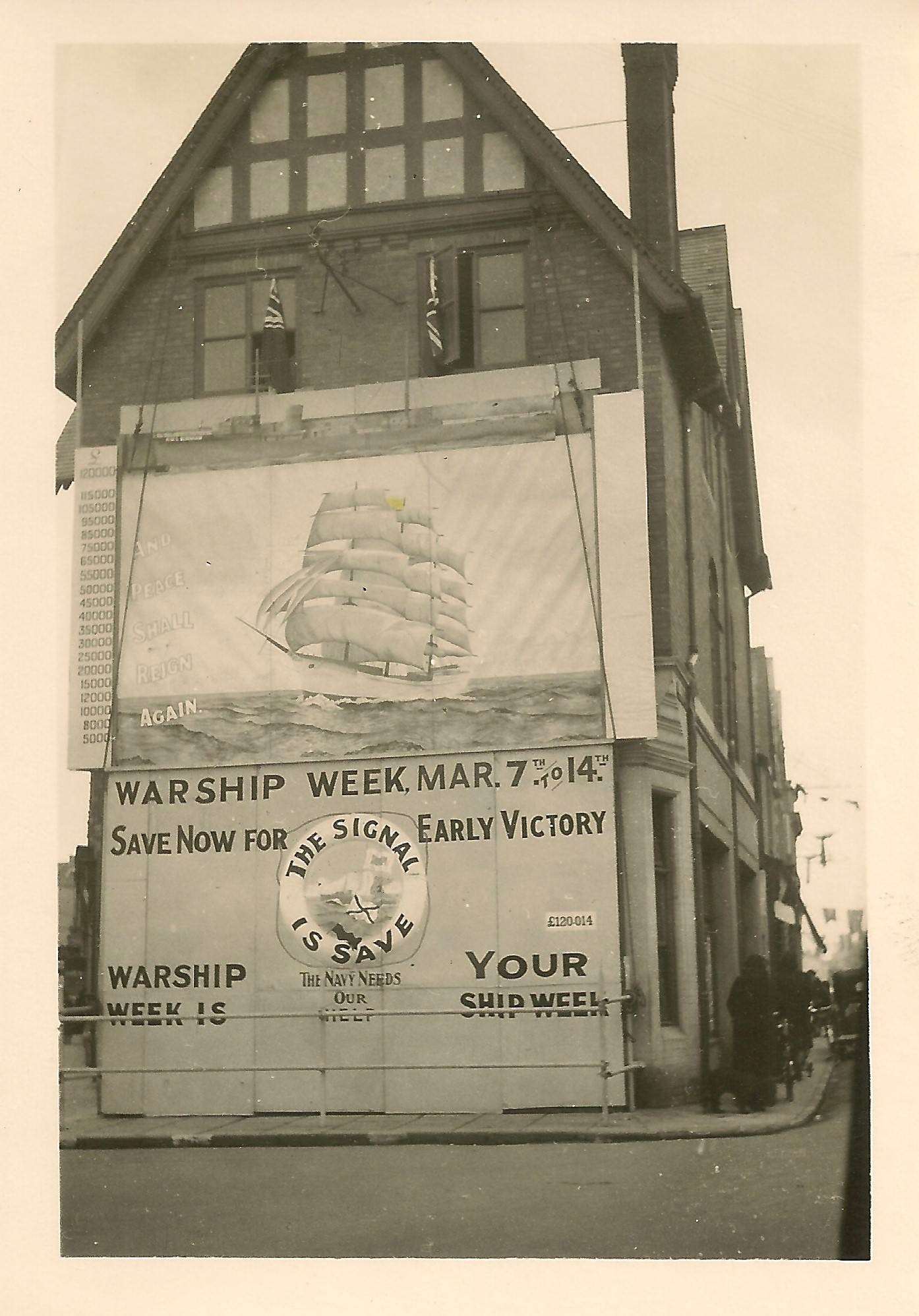
Date suggests this was 1942. Image from Glynn Luxon Archive.The Western Daily Press carried the following report on 12th October 1942 which mentions the adoption of HMS Burnham by the town using Warship Week proceeds:
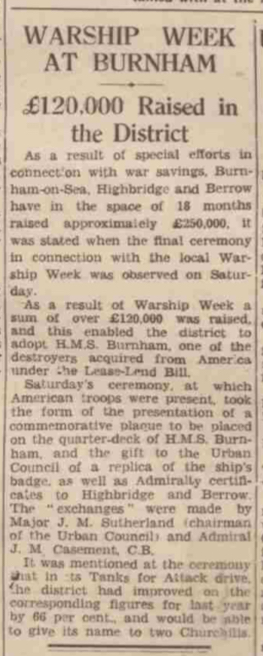
‘Wings for Victory’ Campaign:
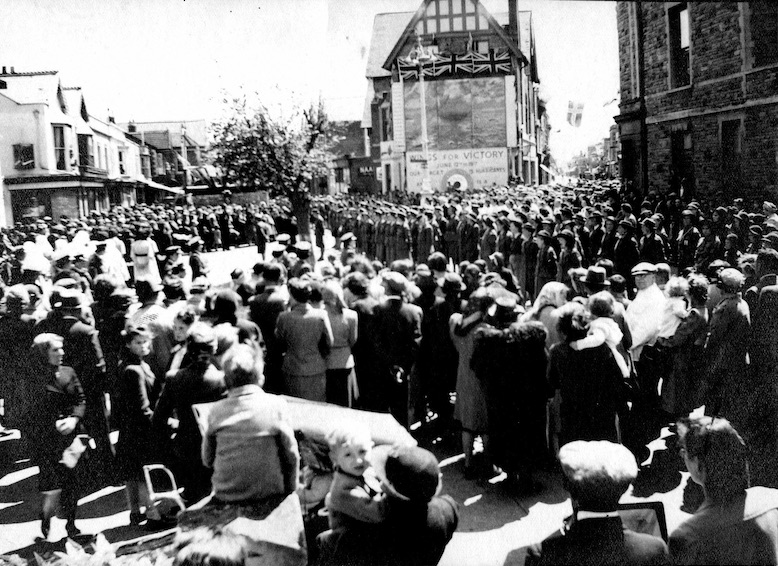
Other national war campaigns included the ‘Wings For Victory’ week to purchase bomber planes, a ‘Spitfire Week’ to purchase fighter planes, a ‘War Weapons Week’ and a ‘Tanks For Attack’ week (see newspaper report above). Parades were often organised with military representation as part of the drive.
It appears from both pictures above that The Lifeboat Restaurant was a favourite place for mounting the publicity material for all of these events. Probably because of the open aspect and space for parades to gather at this junction.
Below is a short film by local amateur cinematographer Norman Gobey on 9.5mm, showing a Messerschmitt aeroplane put on display to raise money for the Spitfire fund during world war II.
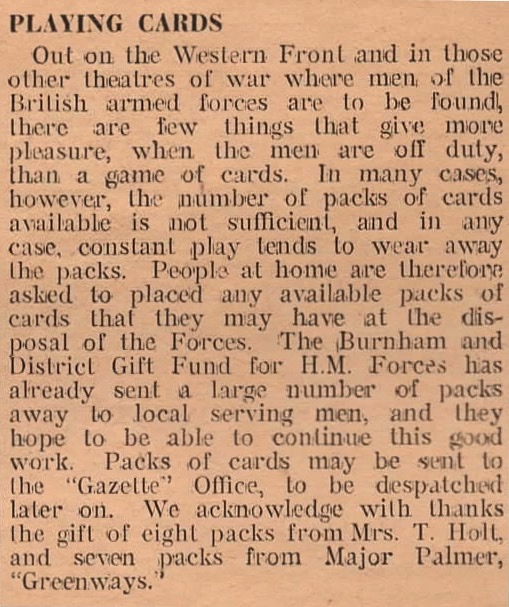
————————————————————————————-
The picture below shows the localArmy Cadet Corps in 1944
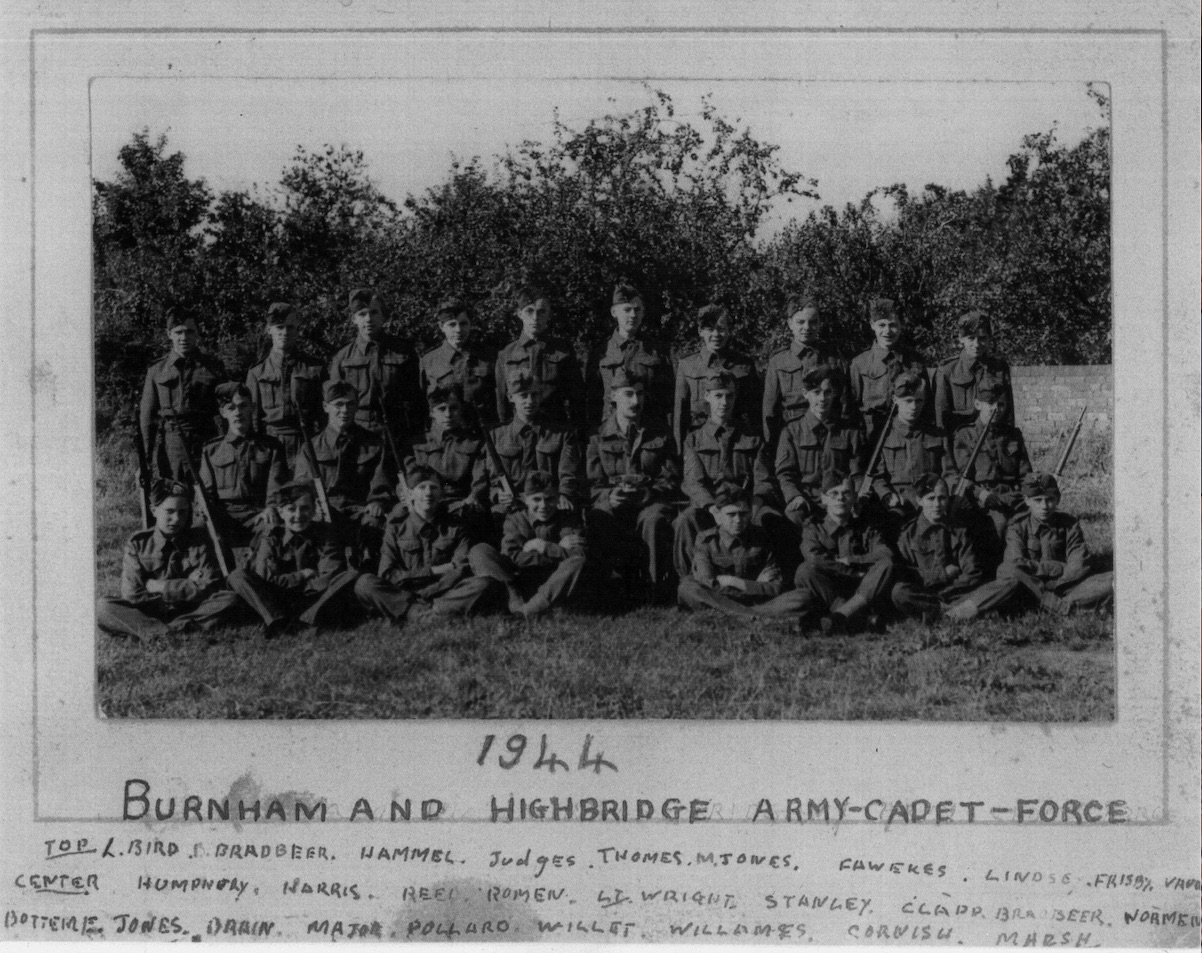
You will find scans of the Burnham Parish Magazine for September 1944 here. Of particular interest here is a warning about caution regarding the predicted end of the war and an appeal for male Sunday School teachers.
During and after the conflict there was of course a need to put a lot of effort into damage repairs. The notice below indicates that not everyone was pulling their weight.
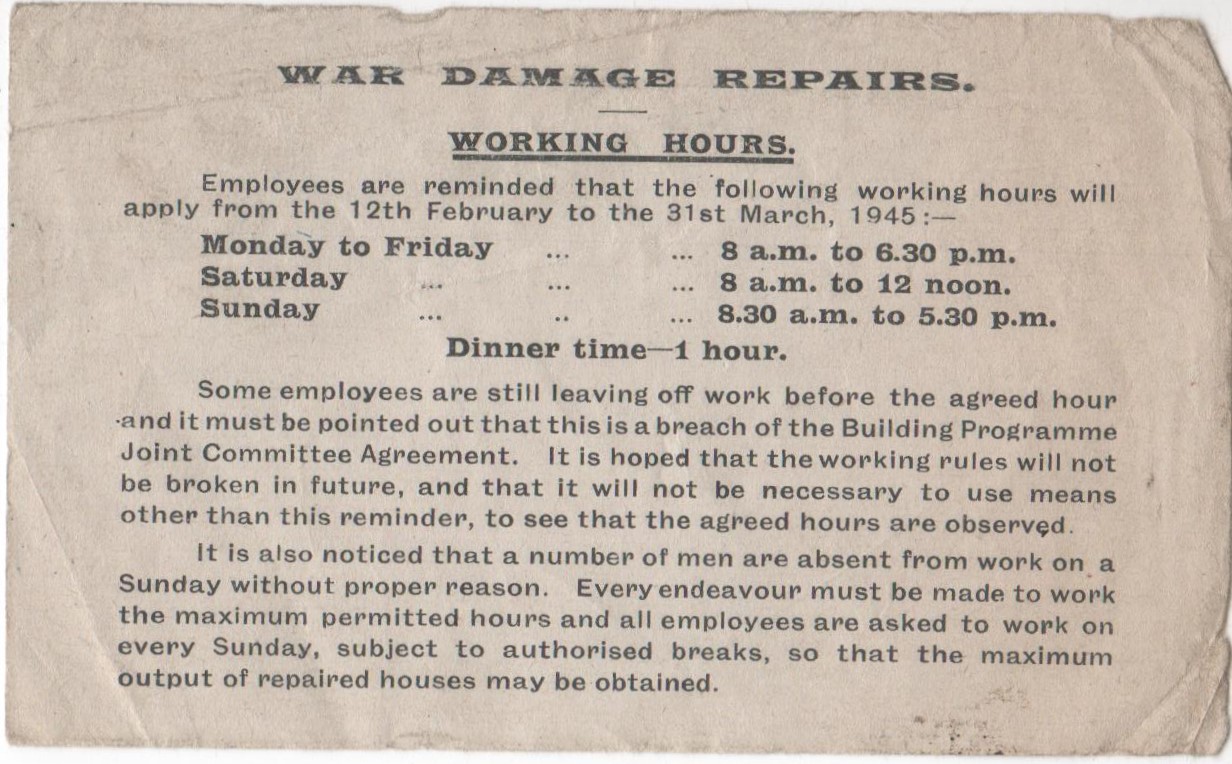
The South West fell into the Army 8th Corps district with H.Q at Taunton. In 1943 a reorganisation created sub-districts with the H.Q. for that of Somerset being at Burnham. Can anyone tell us exactly where this was? (Info from Somerset at War 1939-45 by Mac Hawkins).
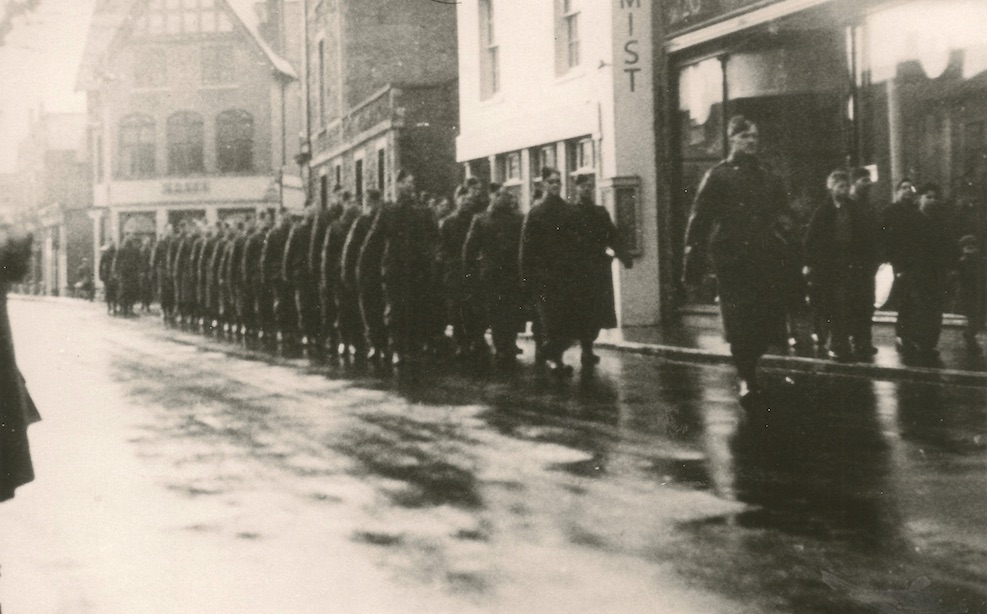
In 1940 the local Home Guard was part of the 8th Somerset (Weston) Battalion. In 1943 however the 13th Somerset (Axbridge) Battalion was created to take over part of the 8th’s area, one of its 4 companies being based in Burnham (Info from Somerset at War 1939-45 by Mac Hawkins).
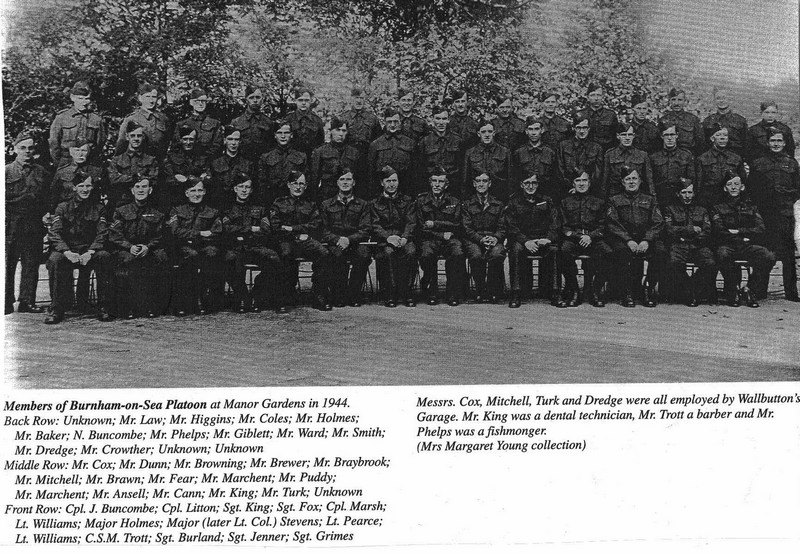
V.E. DAY
Street parties were held in the town. The one below was in Adam St. Please let us know if you know any other names.

You may also be interested in information about the wartime role of Brean Down Fort which you will find here.
Due to changes in the organisation of the website many comments about World War 2 are to be found on the World War 1 page

Dear Mr Srickland,
I was wondering if anyne in your society has carried out any research into the names on the Berrow WWII memorial which is in the car park of St. Mary Magdelene church, specifically Wilfred William Coombes. I beleave he is the nephew of the wife of Henry George Yard whose CWGC grave is in St. Mary’s grave yard. I think Wilfred died in August 1944 so presumably in Normandy but I have no idea where he is buried so if anyone can help I would be very grateful.
Hello Graham,
Our main research has been in businesses, property and events. I have asked a colleague who has been looking at WW1 casualties . Here is Alan’s reply which I hope is some help for you.
John
‘I have not done any research on any WWII Casualties – not Burnham, Berrow, Brean or elsewhere locally. WWI took me long enough
A quick search of ancestry (does Graham subscribe to ancestry?) has a Probate record for 1944. Is this the correct Wilfred William COOMBES
“COOMBES, Wilfred William of Sandy-Pen, Berrow Road, Burnham-on-Sea, Somersetshire died 20 August 1944 at St Martins Hospital Bath Administration Bristol 10 November to Constance Georgine Combes (wife of William Henry Coombes) Effects £444 3s 7d.”
Possibly he died from injuries sustained during the Normandy landings??. If this is correct, I would suppose he might be buried either in Westfield Road or perhaps in Bath.
If we have the right Wilfred William, I can ask my “mole” in the BUDC Burial Committee for where his grave is.
Otherwise Bob Curry from St Andrews should have some detail about him, if we have the right person.
There is also an entry for WWC in the 1921 Census at 2 London House, Berrow Road, age 2. Father William Henry and mother Constance Georgina.
Hope this suffices at this stage. I don’t want to do any more until we have correctly identified the right person.’
Alan
Good morning John,
Please thank Alan for his efforts and suggestions. I have been searching the war cemeteries in Bath with no success and also the Westfield cemetery. I have also entered him in the CWGC website and they have no record of him either, which is very strange. Perhaps he was buried as a civilian. Please don’t trouble yourself further.
Graham
Does anyone know anything about something called ‘The Burnham Party’?
It was a nick-name for the organised groups of British marines that patrolled the south coast during WW 2, presumably out of Burnham, looking out for enemy invaders.
The unit even published their own little pamphlet/newsletter with stories and cartoons of those involved as they were doing it.
I saw a copy of one such pamphlet but now I can’t find any reference to the patrols whatsoever on the internet.
Can anyone help?
AC
Hi Andrew, I don’t believe we have any information about this. I did recall having a previous enquiry but when I found it it was from you! It has become separated from the WW2 page due to reorganisation and remains on the WW1 page, so it is useful to have another comment here. Perhaps someone may come up with something?